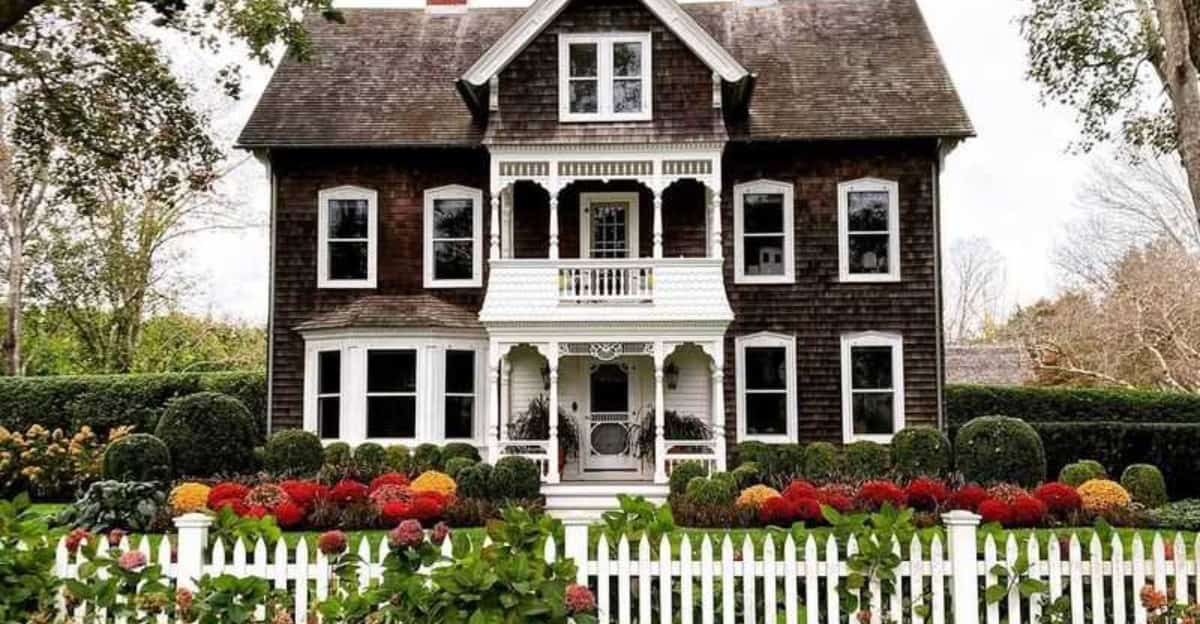As time progresses, certain home styles in America are losing their charm and practicality. By 2030, some once-popular designs are predicted to fall out of favor.
From oversized McMansions to rustic log cabins, let’s explore the homes that may soon become relics of the past.
Each style carries its own quirks and unique characteristics, which may no longer resonate with future homeowners.
1. McMansions
McMansions are the poster child for excess. These oversized homes, with their eclectic architectural features and grandiose facades, often resemble something from a real estate fever dream.
Their impractical size and inefficient use of space make them costly to maintain, both financially and environmentally. As the focus shifts to sustainability, these giants may lose their appeal.
Their lack of cohesive design aesthetic can make them stand out awkwardly, rather than blend tastefully with their surroundings.
Future homebuyers are likely to seek out more practical and eco-friendly alternatives, leaving McMansions to fade into obscurity.
2. Single-Family Detached Homes in Suburban Sprawl
The classic single-family detached home, nestled in sprawling suburbs, may soon be a memory of the past.
These homes represent a lifestyle that demands long commutes and car dependency, both of which are falling out of favor.
The rise of urban living and public transportation initiatives are making these homes less desirable.
As cities grow, the demand for more efficient and communal living spaces increases.
Green spaces and community centers are becoming the new sought-after features, leaving single-family homes in suburban sprawl struggling to compete in modern real estate markets.
3. Traditional Ranch-Style Homes
Traditional ranch-style homes, once the symbol of American suburbia, are facing an uncertain future. Their single-story layout and large footprints are becoming less practical as land becomes more precious.
Modern preferences lean towards multi-story homes that maximize space without sprawling over vast plots.
With a focus on vertical living, these wide and open designs may no longer meet the needs of contemporary families.
As urbanization continues, the ranch-style home could become a nostalgic relic, more suited to historical curiosity than modern living.
4. Split-Level Homes
Split-level homes, characterized by their staggered floor levels, once offered a fresh take on home design.
However, their complexity can be impractical for modern homeowners who prefer open floor plans and accessibility. The unconventional layout can make renovations challenging and limit usability.
As families grow and change, the need for adaptable and versatile spaces becomes imperative.
The split-level design, though unique, may not offer the flexibility needed, leading homeowners to opt for more straightforward architectural solutions.
5. Log Cabins
Log cabins evoke the charm of rustic living but may soon be viewed as impractical. Their natural appeal is overshadowed by issues like insulation inefficiency and maintenance demands.
As energy efficiency becomes paramount, these cabins struggle to meet modern standards.
For those not situated in the wilderness, log cabins can feel out of place in suburban or urban environments.
While they hold nostalgic value, the push towards high-performance homes might see these wooden dwellings relegated to vacation property status rather than permanent residences.
6. Shotgun Houses
Shotgun houses, known for their narrow and elongated design, are quaint but may not suit contemporary needs.
Their linear layout limits privacy and space utilization, making them less appealing to modern families who desire more functional areas.
Often found in older neighborhoods, these homes face challenges with renovations due to their compact nature.
As urban development progresses, the preference for homes with more adaptable and spacious designs grows, potentially phasing out the shotgun house style.
7. Single-Pane Window Homes
Homes with single-pane windows are becoming an anachronism in an era focused on energy conservation.
These windows offer minimal insulation against weather changes, leading to higher energy bills and discomfort. Modern homeowners are prioritizing double or triple-pane solutions to enhance efficiency.
As environmental consciousness rises, properties with outdated features like single-pane windows are seen as requiring immediate upgrades.
The trend is moving towards homes that are not only visually appealing but also energy-smart, making single-pane window homes increasingly obsolete.
8. Victorian Homes
Victorian homes, with their intricate detailing and historical charm, are architecturally stunning but may face challenges in the future.
Maintenance costs and the difficulty of updating these homes for modern living can dissuade potential buyers.
Their large size and outdated layouts are often at odds with contemporary preferences for open and efficient spaces.
While they hold undeniable aesthetic appeal, the practicality of maintaining such homes might see them become less common as homeowners look for easier-to-manage properties without sacrificing style.
9. Open-Concept Homes
Open-concept homes have been a staple of modern design, celebrated for their spaciousness and flow.
However, as people seek more privacy and sound control, the open-concept design might lose its allure. The need for designated workspaces and quiet areas is becoming a priority.
The pandemic era has shifted many perspectives on home design, with a newfound appreciation for separate rooms.
Future trends may favor homes that offer a balance between openness and privacy, leading to a decline in completely open floor plans.
10. Traditional Farmhouse
Traditional farmhouses, with their iconic wrap-around porches and rural charm, may see a decline in desirability.
. As urban living becomes more attractive, the practicality of maintaining such large properties diminishes. The shift towards smaller, more efficient home designs is evident.
While farmhouses embody a rustic aesthetic, the demands of modern living call for adaptable and low-maintenance spaces.
Homebuyers are leaning towards homes that offer practicality without compromising on style, potentially rendering traditional farmhouses obsolete in a rapidly changing world.











